|
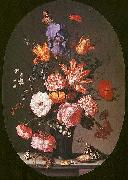 |
Balthasar van der Ast
|
|
(1593/94 - 1657) was a Dutch Golden Age painter who specialized in still lifes of flowers and fruit, as well as painting a number of remarkable shell still lifes; he is considered to be a pioneer in the genre of shell painting. His still lifes often contain insects and lizards. He was born in Middelburg and died at Delft.
|
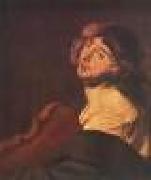 |
BACKER, Jacob Adriaensz.
|
|
Dutch Baroque Era Painter, 1608-1651
Backer was born in Harlingen, but his family moved soon (in 1611) to Amsterdam. Between 1627 and 1633 he and Govert Flinck were pupils of Lambert Jacobsz in Leeuwarden. In 1633 he returned to Amsterdam, where he remained until his death.
His extreme quickness in painting portraits has been particularly noticed, and it is said by his Amsterdam colleague Joachim von Sandrart that he completely finished, in one day, the half length portrait of a lady in full dress, even so early, that she was able to return the same day to Haarlem. Besides being an important portrait painter - some 70 portraits can be attributed to him with certainty, among them the 1642 Company of Cornelis de Graeff voor de Nieuwe Doelen in Amsterdam, on the same wall as Rembrandt's Night Watch - Backer was an excellent painter of religious and mythological paintings. He was especially interested in pastoral subjects, themes from contemporary history, like the huge Crowning of Mirtillo from 1641 in the Brukenthal collection in Sibiu (250 x 250 cm.). In fact, Backer was a leading artist in Amsterdam until his premature death in 1651. |
 |
Ayne Bru
|
|
Ayne (Aine) Bru (probably a Catalanization of Hans Bren) was a 16th century Renaissance painter of German origin who worked in Catalonia. He may have proceeded from Lummen, in the Duchy of Brabant. He is sometimes also called Lucius de Brun. His surname may also suggest provenance from the town of Brenn.
In 1502, he was hired to paint the main altar (retablo) in the church of the monastery of Sant Cugat del Valles, for which he was paid a staggering wage between 1504 and 1507.
On the central panel, Bru depicted the martyrdom of Saint Cucuphas (in Catalan, Sant Cugat) with enormous realism. The executioner cuts the saint's throat while Cucuphas remains tied to a tree trunk. Nearby, there appear another knife (in a basket) and a dog sleeping peacefully. This work is now at the National Art Museum of Catalonia (Museu Nacional d'Art de Catalunya).
The dog from Bru's painting of Cucuphas' martyrdom was later borrowed by Salvador Dale for a painting called "Dale Contemplating Nude" or "Dale Dale Dale".
The vast countryside that serves as a background anachronistically includes the actual monastery of Sant Cugat. Another panel, depicting Saint George (sometimes identified as Saint Candidus or simply as "Warrior Saint"), was attached to this one. It has been rejoined and is visible at the National Art Museum of Catalonia.
Marcel Durliat believes that though the expressionism in this painting is evidence of a Germanic artistic tradition, Bru's Quattrocento depiction of the standing figures in contemporary dress, as well as other details, indicate that the painter may have lived or studied in Northern Italy before moving to Barcelona. |
 |
Axel Kulle
|
|
painted Den forlorade sonens aterkomst in1882 |
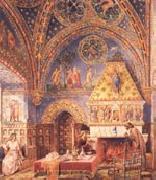 |
Axel Haig
|
|
Swedish etcher and architectural draughtsman , 1835-1921
Swedish printmaker, painter and architect. He studied shipbuilding in Karlskrona from 1850 to 1856. The following year he joined the shipbuilders Lawrence Hill & Co. in Glasgow, but soon left to study architecture in London, where he worked with the English architect Ewan Christian (1814-95) and with William Burges. Under the influence of Burges he became especially interested in Gothic architecture. In the late 1870s he began etching, with the intention of illustrating a book on Scotland's medieval architecture. Haig contributed illustrations to numerous English magazines, including The Architect. (For Haig's drawing of William Burges's competition entry for the Law Courts, London) In 1882 he was awarded a medal for his etchings at the Paris Salon and elected an honorary member of the Swedish Royal Academy. |
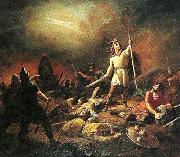 |
axel gustaf hertzberg
|
|
1832-1878
Axel Gustaf Hertzberg född 27 augusti 1832 i Jämtland, död 2 september 1878 i Dusseldorf , Tyskland var en svensk bildkonstnär.
Hertzberg ägnade sig först åt porträtteckning och litografi men övergick senare till oljemåleri. Han studerade vid konstakademien i Stockholm 1849-1860. Han gjorde en resa till Finland där han stannade två år. Därefter studerade han konst i Paris, och slutligen Dusseldorf.
Hertzberg blev 1867 agre vid konstakdemien i Stockholm. |
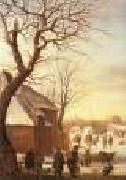 |
AVERCAMP, Hendrick
|
|
Dutch Baroque Era Painter, 1585-1634
1634). He was the first artist in the northern Netherlands to paint winter landscapes. Before him only a few Flemish artists, among them Pieter Bruegel I and his sons, and Jacob Grimmer, had made winter scenery the main subject of their work. Avercamp created a new genre of Dutch painting by combining the panoramic scope, bright colours and high vantage point of these Flemish models with an emphasis on anecdotal detail. |
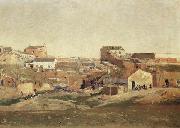 |
Aureliano De Beruete Y Moret
|
|
Spanish , Madrid, 1845 - Madrid, 1912
Spanish writer, painter and collector. After pursuing a political career and taking a doctorate in civil and canon law, he dedicated himself to writing on art and produced important studies on Diego Velezquez (1898), Joaqu'n Sorolla y Bastida (1901) and other artists. He travelled extensively and enthusiastically in Europe (France, Belgium, Switzerland, the Netherlands, Italy, Germany, England and elsewhere), studying especially the different national schools of painting. On his travels he also painted landscapes. After working for some time as a copyist in the Museo del Prado, Beruete decided in 1873 to concentrate his efforts on painting and on learning to perfect his craft. He enrolled at the Escuela Superior de Bellas Artes de S Fernando in Madrid and also studied at the studio of Carlos de Haes. Beruete was among the founders of the Instituci'n Libre de Enseeanza, and with its members, and with Carlos de Haes, he made several study trips abroad. In Paris he came to know the painting of the Barbizon school, and in Belgium he assimilated the teaching of the generation of landscape artists who had adopted a form of Realism. |
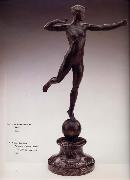 |
Augustus Saint-Gaudens
|
|
Irish-born American Realist Sculptor, 1848-1907, He was the Irish-born American sculptor of the Beaux-Arts generation who most embodied the ideals of the "American Renaissance." Raised in New York City, he traveled to Europe for further training and artistic study, and then returned to major critical success in the design of monuments commemorating heroes of the American Civil War, many of which still stand. In addition to his famous works such as the Robert Gould Shaw Memorial on Boston Common and the outstanding grand equestrian monuments to Civil War generals John A. Logan, atop a tumulus in Chicago, 1894-97 |
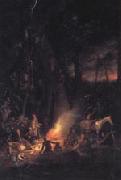 |
Augustus Earle
|
|
Australian Painter , 1793-1838
Nephew of Ralph Earl. He exhibited at the Royal Academy in London between 1806 and 1815, when he began travelling. He visited the Mediterranean between 1815 and 1817, and lived in North America (1818-20) and South America (1820-24). In February 1824, en route to India, he was accidentally abandoned on Tristan da Cunha for eight months. The passing ship that rescued him took him to Australia. Here he lived from 1825 until 1828, a period broken by a seven-month residence in New Zealand. During all of his voyages he made watercolour sketches, particularly of places 'hitherto unvisited by any artist', apparently with the intention of publishing a series of aquatints. These drawings, such as a Bivouac, Daybreak, on the Illawarra Mountains (1827; Canberra, N. Lib.), have a robust autobiographical quality. In Sydney he obtained a number of commissions, including a full-length portrait of Governor Sir Thomas Brisbane (1825-6; Sydney, Govt House). Earle returned to England in 1829 and produced a series of prints, Views in New South Wales, and Van Diemen's Land. |
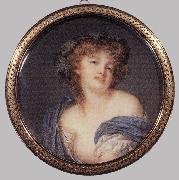 |
AUGUSTIN, Jacques-Jean-Baptiste
|
|
French miniaturist (b. 1759, Saint-Di? d. 1832, Paris)
1832). French painter. After receiving instruction in art from Jean Girardet (1709-78) and Jean-Baptiste-Charles Claudot (1733-1805), he went to Paris in 1781, where he won recognition as a miniature painter. The miniatures he painted in the 1790s, for example his portrait of Mme Vanh?e, n?e Dewinck (1792; Paris, Louvre), are among his most animated works; often portraying figures in a landscape setting, they develop the exuberant style of Niclas Lafrensen and Peter Adolf Hall. He also admired the work of Jean-Baptiste Greuze, whose Bacchante (Waddesdon Manor, Bucks, NT) in his own collection he copied in miniature (London, Wallace) and in enamel (Paris, Louvre). |
 |
Auguste Rodin
|
|
French Sculptor, 1840-1917
.French sculptor. Insolvent and repeatedly rejected by the École des Beaux-Arts, he earned his living by doing decorative stonework. Not until his late 30s, after a trip to Italy, did he develop a personal style free of academic restraints and establish his reputation as a sculptor with The Age of Bronze (exhibited 1878), whose realism was so great that he was accused of forming its mold on a living person. His Gates of Hell, a bronze door commissioned in 1880 for a proposed Musee des Arts Decoratifs, remained unfinished at his death, but two of its many figures were the bases of his most famous images, The Thinker (1880) and The Kiss (1886). His portraits include monumental figures of Victor Hugo and Honore de Balzac. Though these and many other works caused controversy for their unconventionality, he was successful enough that he could establish a workshop where he executed only molds, leaving the casting of bronze and the carving of marble to assistants. To his sculpture he added book illustrations, etchings, and numerous drawings, mostly of female nudes. |
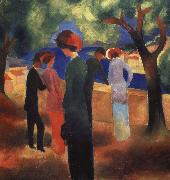 |
auguste macke
|
|
August Macke (1887-1914) was a German painter whose harmonious and simple scenes of everyday life made a unique contribution to Expressionism. |
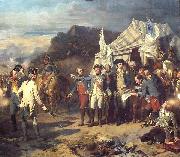 |
Auguste Couder
|
|
(1 April 1790 in Paris - 21 July 1873 in Paris) was a French painter and student of Jean-Baptiste Regnault and Jacques Louis David. He joined the Academie des beaux-arts in 1839 and was an officer of the Legion d'honneur. He married Cornelie Stouf, daughter of the sculptor Jean-Baptiste Stouf.
Couder was buried in the cemetery of Pere-Lachaise.
|
 |
Auguste Borget
|
|
Auguste Borget (1808-1877) was a French artist who is best known for his drawings and prints of exotic places, in particular China. He was born in 1808 in Issoudun, Indre. At age 21, he went to Paris where he became a close friend of Honore de Balzac. Borget periodically exhibited at the Paris Salon from 1836 to 1859. Beginning in 1836, he traveled through North and South America before stopping briefly in Honolulu in May, 1838, on board the ship "Psyche", on a world tour. He went to Canton in September 1838 and stayed in the region for 10 months. While in Canton, he met the English artist George Chinnery, and they went on sketching trips together.
In July 1839 he visited Manila, Singapore and Calcutta. In 1840 he traveled widely in India, returning to Paris in the summer of that year. Borgetes sketches and watercolors from China were the basis for his most famous publication "Sketches of China and the Chinese", published in 1842. His book "La Chine ouverte" was illustrated with fine woodcut engravings. A major Salon of his original works, including watercolors and boldly executed oil paintings was held in Paris in 1843. Borget died in 1877. |
 |
August Strindberg
|
|
1849-1912
Swedish painter, sculptor and playwright. He had no art training, but learnt from artist friends after abandoning his studies at the University of Uppsala in 1872. The chief influence on him was Per Ekström, whose broken colour-spot technique he attempted to copy during his initial painting period in 1872-4 in Stockholm and on the skerry-islands Kymmendö and Sandhamn. Very little of Strindberg's early painting survives, but he had already found his special motifs: the sea, usually with turbulent waves; solitary trees or flowers on bare cliffs or sandy beaches in the outermost fringe of the skerries. After he stopped painting in 1874 he became Sweden's leading art critic, as well as the ideological leader of the radical Swedish artists' movement, which in 1884 formed the Konstnärsförbund (the Artists' Association) in protest against the Academy of Art. Prominent among the members were the painters Carl Olof Larsson, Karl Nordström and Richard Bergh. During this period, however, he produced sketches in words and pictures as illustrations to his own writings, which Carl Larsson was commissioned to do thereafter. From 1883 he stayed abroad, primarily in France and Switzerland, and belonged during a couple of long periods to the Scandinavian artists' colony in Grez-sur-Loing, near Fontainebleau in France. In 1886 in Switzerland he started photography and took a series of self-portraits that were intended for publication |
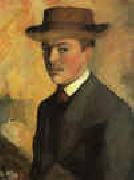 |
August Macke
|
|
1887-1914
August Macke Locations
August Macke was born in Meschede, Germany. His father, August Friedrich Hermann Macke (1845-1904), was a building contractor and his mother, Maria Florentine, n??e Adolph, (1848-1922), came from a farming family in Germany's Sauerland region. The family lived at Br??sseler Straße until August was 13. He then lived most of his creative life in Bonn, with the exception of a few periods spent at Lake Thun in Switzerland and various trips to Paris, Italy, Holland and Tunisia. In Paris, where he traveled for the first time in 1907, Macke saw the work of the Impressionists, and shortly after he went to Berlin and spent a few months in Lovis Corinth's studio. His style was formed within the mode of French Impressionism and Post-impressionism and later went through a Fauve period. In 1909 he married Elizabeth Gerhardt. In 1910, through his friendship with Franz Marc, Macke met Kandinsky and for a while shared the non-objective aesthetic and the mystical and symbolic interests of Der Blaue Reiter.
Macke's meeting with Robert Delaunay in Paris in 1912 was to be a sort of revelation for him. Delaunay's chromatic Cubism, which Apollinaire had called Orphism, influenced Macke's art from that point onwards. His Shops Windows can be considered a personal interpretation of Delaunay's Windows, combined with the simultaneity of images found in Italian Futurism. The exotic atmosphere of Tunisia, where Macke traveled in 1914 with Paul Klee and Louis Moilliet was fundamental for the creation of the luminist approach of his final period, during which he produced a series of works now considered masterpieces. August Macke's oeuvre can be considered as Expressionism, (the movement that flourished in Germany between 1905 and 1925) and also his work was part of Fauvism. The paintings concentrate primarily on expressing emotion, his style of work represents feelings and moods rather than reproducing objective reality, usually distorting colour and form.
Macke's career was cut short by his early death at the front in Champagne in September 1914, the second month of World War I. His final painting, Farewell, depicts the mood of gloom that settled after the outbreak of war.
|
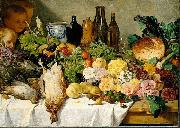 |
August Jernberg
|
|
(16 September 1826 - 22 June 1896) was a Swedish artist who emigrated to Germany.
In his early years he mainly painted portraits, and historical or biblical pictures. In the 1860s he became a genre and landscape painter. He studied at the Royal Swedish Academy of Arts in Stockholm 1843-1846 and then went to Paris, where he studied under Thomas Couture from 1847 to 1853. In 1854 he settled down in Desseldorf, and remained there until his death, with the exceptions of some shorter trips.
Also his son Olof Jernberg (1855 - 1935) was an artist.
|
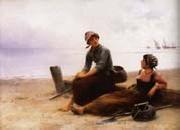 |
August Hagborg
|
|
1852 - 1925,Swedish painter. He studied at the Konstakademi in Stockholm (1871-5), then went to Paris in the autumn of 1875, where he lived until 1909. He began to exhibit at the Salon as early as 1876 and became one of its most industrious contributors. In 1877 he showed at the Salon his painting Waiting (1877; priv. col., see S. Strembom: Konstnersferbundets historia [History of the Federation of Artists], i (Stockholm, 1945), pl. 35), developed from a study made in Bohuslen on the west coast of Sweden. It shows a young fisherman's wife, her child on her arm, gazing out over the sea and waiting for her husband. This introduced what was to become Hagborg's favourite subject-matter: the fishing community, mostly in Normandy and Brittany. Typical elements of his paintings are young women, depicted in idealized and heroic manner, in theatrical poses, and a realistic background, usually of shallow beaches at ebb tide; in his later works, he painted in more delicate and exquisite, silvery colours. |
 |
August Ahlborn
|
|
(October 11, 1796 - August 24, 1857) was a German landscape painter.
Ahlborn was born in Hanover, and studied with Karl Wilhelm Wach in Berlin. He went to Italy in 1827, where he converted to Roman Catholicism, and lived in Florence, Ascoli, and Rome. He painted mainly Italian landscapes, but also some Nordic ones, as well as a few portraits and religious works. He died in Rome in 1857.
|
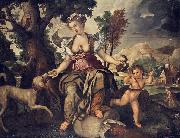 |
Augsburger Schule
|
|
painted Allegory of Remorselessness in between 1580(1580) and 1600(1600)
|
|

